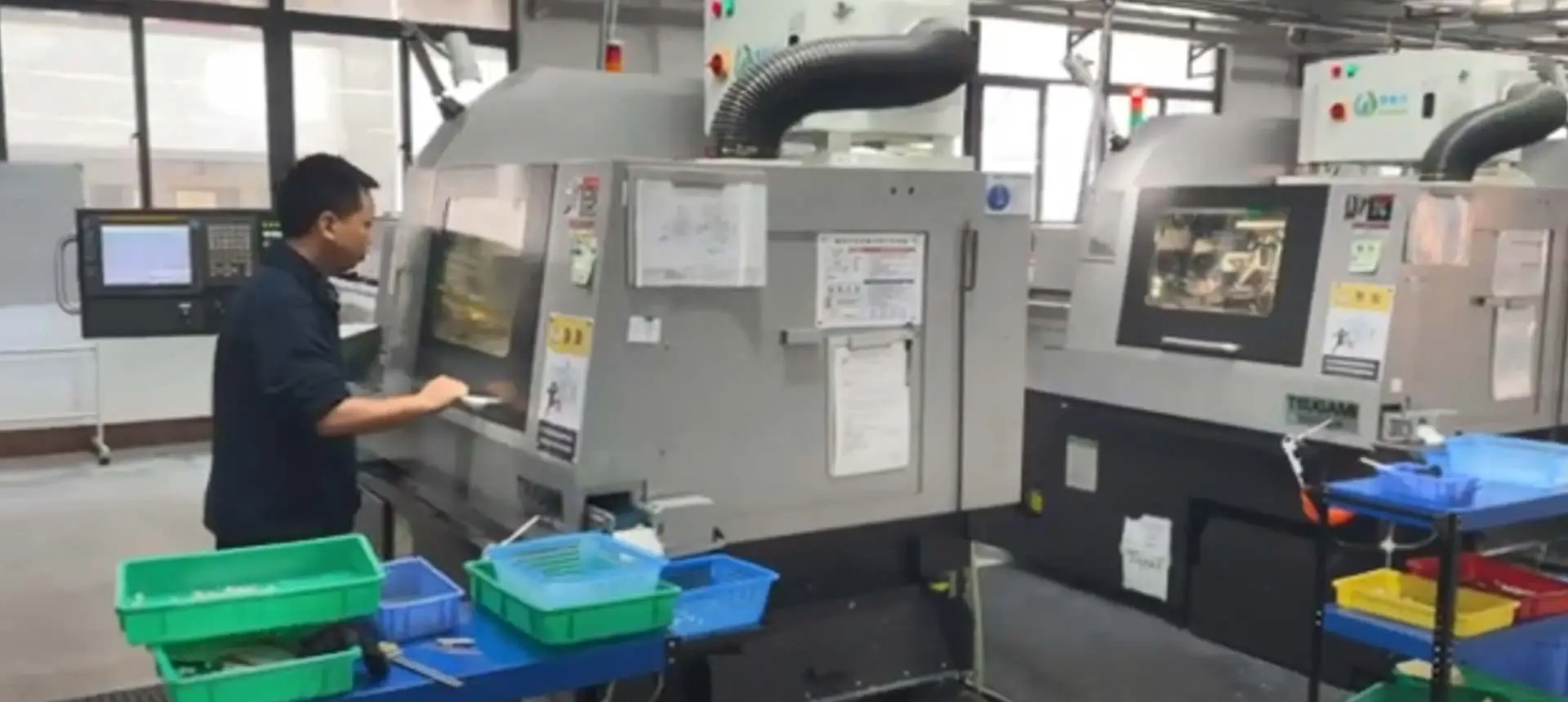
في شركتنا ، نستخدم عملية عالية الكفاءة لإنتاج قطع غيار الآلات باستخدام الحاسب الآلي التي تلبي متطلبات عملائنا المحددة. هنا نظرة عامة على العملية التي نتبعها:
التصميم والبرمجة: يعمل مهندسونا المهرة بأحدث البرامج لتصميم الجزء وبرمجته ، مما يضمن أنه يفي بالمواصفات والتفاوتات المطلوبة.
اختيار المواد: نختار بعناية المادة المناسبة للجزء ، مع مراعاة قوتها ومتانتها وغيرها من الخصائص.
التصنيع باستخدام الحاسب الآلي: نستخدم آلات متطورة يتم التحكم فيها بواسطة الكمبيوتر لإجراء عملية التصنيع باستخدام الحاسب الآلي ، والتي تنطوي على إزالة المواد الزائدة من قطعة العمل لإنشاء الشكل النهائي للجزء.
فحص الجودة: يقوم فريقنا بفحص الأجزاء في كل مرحلة من مراحل العملية ، باستخدام أحدث التقنيات والمعدات لضمان تلبية كل جزء لمعايير الجودة المطلوبة.
التشطيبات: نقدم مجموعة من خيارات التشطيبات ، بما في ذلك السفع الرملي ، والصقل ، والأنودة ، والطلاء ، لتحسين مظهر الأجزاء ووظائفها.
التغليف والشحن: نقوم بتغليف الأجزاء بعناية لضمان وصولها الآمن وتسليمها على الفور لعملائنا.
بفضل التزامنا بالجودة والكفاءة ورضا العملاء ، قمنا ببناء سمعة كمزود موثوق به لقطع غيار الآلات CNC المخصصة. إذا كان لديك مشروع يتطلب قطع غيار عالية الجودة باستخدام الحاسب الآلي ، يرجى الاتصال بنا لمناقشة متطلباتك وكيف يمكننا المساعدة.
الوصف | الطحن باستخدام الحاسب الآلي | تحول التصنيع باستخدام الحاسب الآلي |
مواد | الألومنيوم/مكعب/الصلب/الفولاذ المقاوم للصدأ | الألومنيوم/مكعب/الصلب/الفولاذ المقاوم للصدأ |
الحد الأقصى لحجم الجزء | * من من من من من ؟ | * من من من من من ؟ |
مهلة قياسية | 4 أيام عمل | 4 أيام عمل |
التسامح (± مم) | الطحن فقط: حتى ± من من من من بقص الأسلاك أو EDM: حتى من من من من من | حتى ± من من من |
ضمان الجودة | ايزو ، ايزو من من من من مراجعة حسابات الموردين جهاز عرض قياس CMM و 2D تقارير التفتيش الفحص الوظيفي عينات مخصصة | ايزو ، ايزو من من من من مراجعة حسابات الموردين جهاز عرض قياس CMM و 2D تقارير التفتيش الفحص الوظيفي عينات مخصصة |
دقة عالية ودقة: مع التصنيع باستخدام الحاسب الآلي ، يمكن تصنيع الأجزاء بتفاوتات شديدة الدقة ودقة عالية ، مما يوفر مستوى من الاتساق يصعب تحقيقه مع عمليات المعالجة اليدوية.
مجموعة واسعة من المواد: يمكن استخدام الآلات باستخدام الحاسب الآلي مع مجموعة متنوعة من المواد ، بما في ذلك المعادن والبلاستيك والخشب والمواد المركبة.
فعالة من حيث التكلفة للإنتاج بكميات كبيرة: يعد التصنيع باستخدام الحاسب الآلي مثاليًا للتصنيع بكميات كبيرة لأنه يتيح إنتاج كميات كبيرة من الأجزاء بتكلفة أقل لكل قطعة.
زيادة الكفاءة: تعني الطبيعة الآلية لتصنيع الآلات باستخدام الحاسب الآلي أنه يمكن تنفيذ الإنتاج بكفاءة أكبر ، دون الحاجة إلى التدخل اليدوي ، مما يؤدي إلى أوقات إنتاج أسرع.
تعدد الاستخدامات: يمكن استخدام التصنيع باستخدام الحاسب الآلي لإنتاج مكونات معقدة بأشكال وهندسية معقدة ، مما يجعلها مناسبة لمجموعة واسعة من التطبيقات.
في مجال التصنيع الدقيق ، يقف التحكم الرقمي بالكمبيوتر (CNC) كأعجوبة تكنولوجية أحدثت ثورة في صناعة الإنتاج. تتضمن المعالجة الآلية باستخدام الحاسب الآلي استخدام الأنظمة المحوسبة للتحكم في أدوات الماكينة وعملياتها ، مما يسمح بإنتاج دقيق وفعال للغاية للأجزاء والمكونات المعقدة. مختلف عمليات التصنيع باستخدام الحاسب الآلي تحت HHC لها نطاقات تطبيق مختلفة وخصائص معالجة. يوفر ما يلي تصنيفًا ومقدمة مفصلة.
واحدة من أكثر أنواع التصنيع باستخدام الحاسب الآلي شيوعًا ، تستخدم الطحن أدوات القطع الدوارة لإزالة المواد من قطعة العمل. يمكن لآلة الطحن أن تتحرك على طول محاور متعددة ، مما يخلق مجموعة واسعة من الأشكال والفتحات والثقوب. من المكونات البسيطة إلى النماذج الأولية المعقدة ، فإن الطحن متعدد الاستخدامات ويستخدم على نطاق واسع في صناعات مثل الطيران والسيارات والإلكترونيات.

في عمليات تحويل ، تدور قطعة العمل بينما تشكلها أداة القطع في الشكل المطلوب. هذا النوع من التصنيع باستخدام الحاسب الآلي مثالي لإنشاء مكونات أسطوانية مثل أعمدة ومسامير ومغزل. التحول الدقيق هو حجر الزاوية في عمليات التصنيع ، ويوفر الكفاءة والدقة لمختلف التطبيقات.

كما يوحي الاسم ، تم تصميم آلات الحفر باستخدام الحاسب الآلي لإنشاء ثقوب في قطع العمل. تستخدم هذه الآلات لقم الثقب الدوارة لإزالة المواد ، وهي ضرورية في إنتاج المكونات التي تتطلب ثقوبًا دقيقة وموحدة. تعتمد صناعات مثل البناء ، وتشغيل المعادن ، والإلكترونيات بشكل كبير على الحفر باستخدام الحاسب الآلي لتلبية احتياجات التصنيع الخاصة بهم.
عندما تكون الدقة القصوى والانتهاء من السطح ذات أهمية قصوى ، فإن الطحن باستخدام الحاسب الآلي يدخل في اللعب. تستخدم هذه الطريقة عجلات جلخ لإزالة المواد وتحقيق تفاوتات صارمة. لا غنى عن الطحن باستخدام الحاسب الآلي في إنتاج الأدوات والقوالب والمكونات عالية الدقة المستخدمة في الأجهزة الطبية وهندسة الطيران.
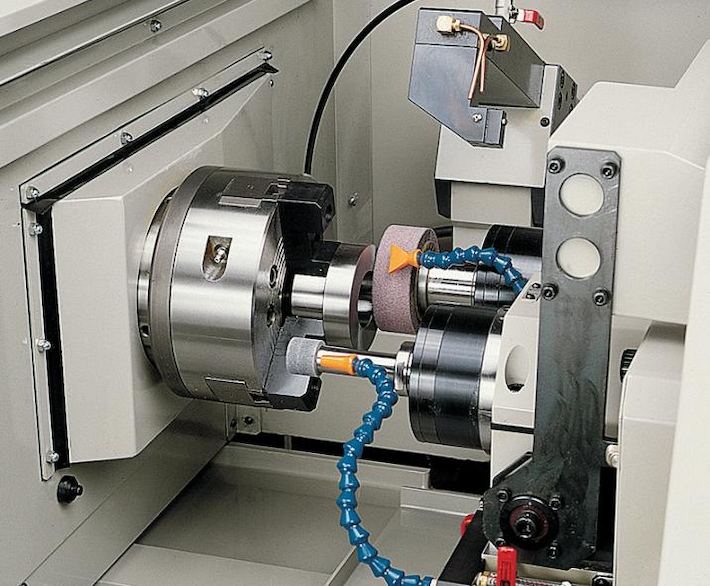
EDM هي طريقة تصنيع CNC غير تقليدية تستخدم التصريفات الكهربائية لتشكيل المواد. من خلال شرارات كهربائية يتم التحكم فيها بعناية ، يمكن لـ EDM إنشاء أشكال معقدة ومعقدة بدقة عالية. هذه التقنية مفيدة بشكل خاص للمعادن الصلبة التي تمثل تحديًا للآلة بالطرق التقليدية. على سبيل المثال ، نستخدم آلات التفريغ الكهربائي (EDM) لتخصيص قوالب للقوالب

القطع بالليزر باستخدام الحاسب الآلي ينطوي على استخدام شعاع الليزر لقطع المواد ، وخلق حواف دقيقة ونظيفة. تستخدم هذه الطريقة على نطاق واسع في تصنيع مكونات الصفائح المعدنية للصناعات التي تتراوح من السيارات إلى الإلكترونيات الاستهلاكية. يجعل المستوى العالي من الدقة والسرعة القطع بالليزر باستخدام الحاسب الآلي عملية لا تقدر بثمن في التصنيع الحديث.
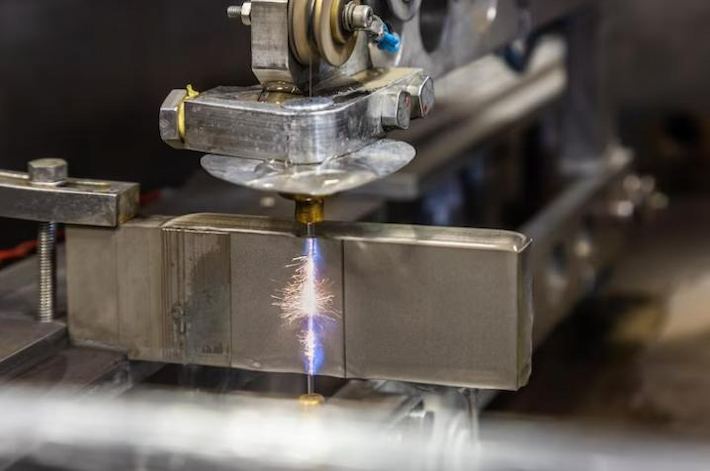
في المشهد المتطور باستمرار للتصنيع ، ظهرت تكنولوجيتين متطورتان كمقدمة: التصنيع باستخدام الحاسب الآلي والطباعة ثلاثية الأبعاد. كل طريقة تجلب مجموعة من نقاط القوة والتطبيقات الخاصة بها إلى الطاولة. دعونا نتطرق إلى تعقيدات التصنيع باستخدام الحاسب الآلي والطباعة ثلاثية الأبعاد ، ومقارنة ميزاتها ومزاياها وقيودها.
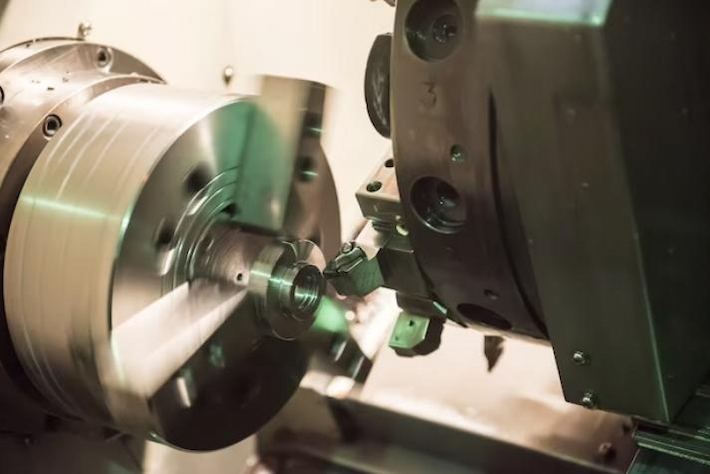
التصنيع باستخدام الحاسب الآلي (التحكم العددي بالكمبيوتر) هو عملية تصنيع مغرية. أنه ينطوي على إزالة المواد من قطعة العمل لتحقيق الشكل المطلوب. تستخدم هذه العملية تصميم بمساعدة الكمبيوتر (CAD) وبرنامج التصنيع بمساعدة الكمبيوتر (CAM) للتحكم بدقة في حركة أدوات القطع.
يشتهر التصنيع باستخدام الحاسب الآلي بمستوى عال من الدقة والدقة. يمكنه تحقيق تفاوتات صارمة وإنتاج تفاصيل معقدة ، مما يجعله مناسبًا للتطبيقات التي تكون فيها الدقة ذات أهمية قصوى ، مثل الصناعات الجوية والطبية. التصنيع باستخدام الحاسب الآلي متعدد الاستخدامات عندما يتعلق الأمر بالتوافق المادي. يمكنها التعامل مع مجموعة واسعة من المواد ، بما في ذلك المعادن والبلاستيك والمواد المركبة. هذا يجعلها الخيار المفضل للصناعات التي تتطلب المتانة والقوة في مكوناتها. التصنيع باستخدام الحاسب الآلي مناسب تمامًا لكل من النماذج الأولية والإنتاج على نطاق واسع. في حين أن وقت الإعداد لتصنيع الآلات باستخدام الحاسب الآلي يمكن أن يكون أطول من الطباعة ثلاثية الأبعاد ، فإنه يتفوق في إنتاج أجزاء وظيفية عالية الجودة. يوفر التصنيع باستخدام الحاسب الآلي تشطيبات سطح فائقة مقارنة بالعديد من تقنيات الطباعة ثلاثية الأبعاد. هذا يجعله اختيارًا مثاليًا للمكونات التي تتطلب سطحًا مصقولًا أو ملساء.
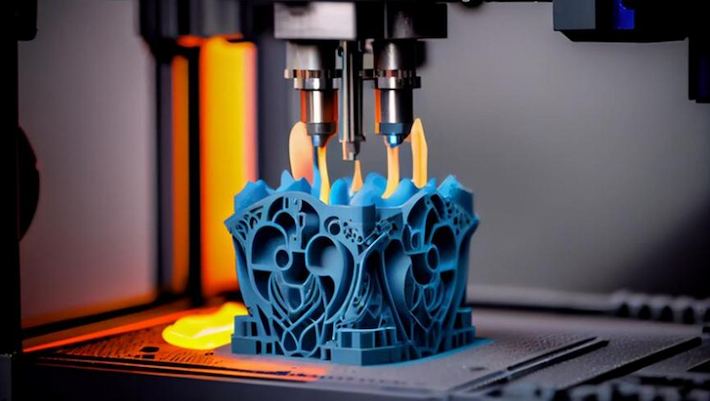
الطباعة ثلاثية الأبعاد ، أو التصنيع الإضافي ، يبني الأشياءطبقة بطبقة من نموذج رقمي. ينطوي على إيداع المواد في نمط معين لإنشاء كائن ثلاثي الأبعاد. هذه العملية متعددة الاستخدامات للغاية وتسمح بالأشكال الهندسية المعقدة.
تدعم الطباعة ثلاثية الأبعاد مجموعة متنوعة من المواد ، بما في ذلك البلاستيك والمعادن والسيراميك وحتى المواد الحيوية. تستمر الخيارات المادية في التوسع ، وفتح إمكانيات جديدة لمختلف الصناعات. تتفوق الطباعة ثلاثية الأبعاد في النماذج الأولية السريعة وهي مناسبة تمامًا للأشكال الهندسي المعقدة التي قد تشكل تحديًا لتصنيع الآلات باستخدام الحاسب الآلي. ومع ذلك ، قد لا تتطابق مع سرعة التصنيع باستخدام الحاسب الآلي للإنتاج على نطاق واسع. من حيث الفعالية من حيث التكلفة ، خاصة بالنسبة للإنتاج والنماذج الأولية المنخفضة الحجم ، يمكن أن توفر الطباعة ثلاثية الأبعاد مزايا بسبب انخفاض هدر المواد والإعدادات البسيطة. يتم الاحتفال بالطباعة ثلاثية الأبعاد لقدرات التخصيص الخاصة بها. يسمح بإنشاء تصميمات مخصصة فريدة من نوعها دون الحاجة إلى أدوات إضافية ، مما يجعلها مثالية للإنتاج لمرة واحدة أو دفعة صغيرة.
بشكل عام ، يعتمد الاختيار بين التصنيع باستخدام الحاسب الآلي والطباعة ثلاثية الأبعاد على عوامل مثل المواد ومتطلبات الدقة وحجم الإنتاج وتعقيد المشروع. لتسيير الإنتاج الأكبر ، تتفوق الآلات باستخدام الحاسب الآلي في الدقة وتعدد المواد ، بينما تتألق الطباعة ثلاثية الأبعاد في النماذج الأولية السريعة وتطبيقات التصميم المعقدة.
الكاتيون.
التصنيع باستخدام الحاسب الآلي (التحكم العددي بالكمبيوتر) يلعب دورا حاسما في تصنيع مكونات دقيقة عالية الجودة. فيما يلي خطوات وتفاصيل العملية العامة لتصنيع الشفاه الآلية باستخدام الحاسب الآلي:
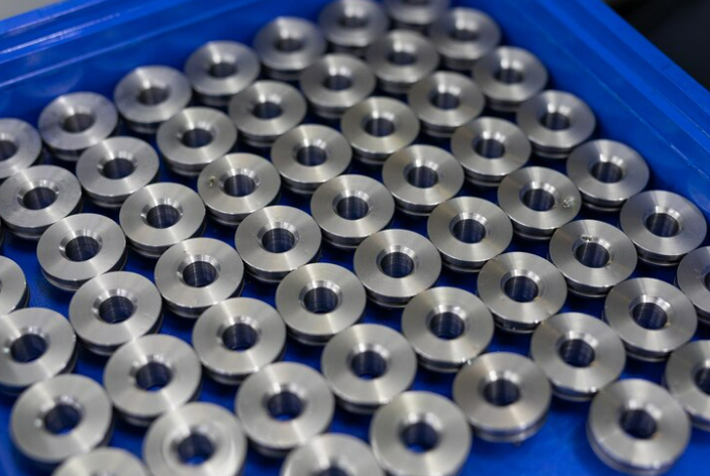
خطوات معالجة الشفاه الآلية باستخدام الحاسب الآلي:
1. التصميم والنمذجة:
قبل تصنيع مكونات CNC ، يعد تصميم CAD (التصميم بمساعدة الكمبيوتر) ضروريًا. يستخدم مهندسو التصميم برنامج CAD لإنشاء نموذج ثلاثي الأبعاد للشفة وتحديد الأشكال الهندسية والأبعاد ومسارات الآلات.
2. إعداد المواد:
اختر المواد الخام المناسبة ، وعادة المعادن (مثل الفولاذ المقاوم للصدأ والألومنيوم وما إلى ذلك). يعتمد اختيار المواد على غرض الحافة وبيئة العمل ومتطلبات الأداء.
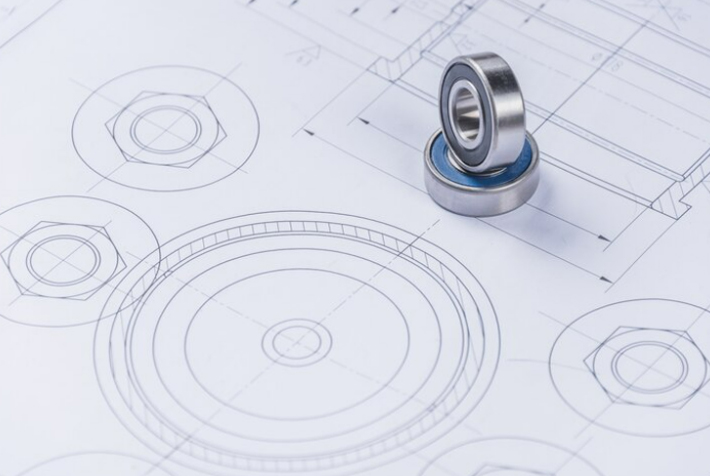
3. عمليات التصنيع:
أ. التخشين:
استخدام أدوات القطع على آلات التصنيع باستخدام الحاسب الآلي لأداء التخشين ، وتشكيل الشكل العام لقطعة العمل تقريبًا.
الهدف من التخشين هو إزالة المواد الزائدة بسرعة ، وترك الشكل النهائي التقريبي.
ب. شبه تشطيب:
استخدم أدوات مختلفة لإنهاء شبه قطعة العمل ، مما يزيد من الاقتراب من الشكل النهائي.
تقليل سرعة القطع لتحسين نعومة السطح.
ج. تشطيب:
استخدم أدوات صغيرة للقطع الدقيق النهائي ، وتحقيق الأبعاد النهائية ونعومة السطح.
غالبًا ما ينطوي الانتهاء على استخدام أدوات أصغر لتعزيز دقة الآلات.
د. ثقب بالقطع وقطع الخيط:
استخدام أدوات متخصصة لتصنيع الفتحات وقطع الخيوط لضمان تلبية الحافة لمواصفات التصميم.
4. التفتيش ومراقبة الجودة:
بعد كل خطوة من خطوات التشغيل ، إجراء عمليات تفتيش لضمان تلبية أبعاد قطعة العمل وشكلها وجودة السطح لمتطلبات المواصفات. تشمل طرق الفحص الشائعة قياس التنسيق واختبار خشونة السطح والاختبار بالموجات فوق الصوتية.
5. المعالجة السطحية:
وفقًا للمتطلبات ، قم بإجراء المعالجات السطحية مثل التلميع أو السفع الرملي أو الطلاء لتعزيز المظهر ومقاومة التآكل.
6. التعبئة والتغليف والتسليم:
بعد الانتهاء من التصنيع والتفتيش ، قم بتعبئة الشفاه وفقًا لمتطلبات العملاء ومتابعة التسليم.
التصنيع باستخدام الحاسب الآلي (التحكم الرقمي بالكمبيوتر) هو عملية تصنيع حيث يتحكم برنامج الكمبيوتر المبرمج مسبقًا في حركة الآلات والأدوات. تسمح هذه العملية بإنشاء أجزاء دقيقة ومعقدة للغاية من مواد مختلفة ، بما في ذلك المعادن والبلاستيك. يستخدم التصنيع باستخدام الحاسب الآلي على نطاق واسع في صناعات مثل السيارات والإلكترونيات والفضاء.
يعد تحويل CNC مثاليًا لإنتاج أجزاء أسطوانية أو دائرية ، مثل الأعمدة ، والبطانات ، والبراغي ، والدبابيس. يستخدم عادة للمكونات التي تتطلب دقة عالية وأسطح ناعمة. تستفيد صناعات مثل السيارات والطبية والإلكترونية منالصين الألومنيوم تحول أجزاء.
ابحث عن مورد يتمتع بخبرة واسعة ومعدات حديثة والتزام قوي بمراقبة الجودة. شهادات مثل ISO ، وياتف ، تشير إلى الامتثال لمعايير الصناعة. أيضا ، النظر في عوامل مثل القدرة الإنتاجية ، والمهل الزمنية ، ومراجعات العملاء.
في hc ، نقدم أجزاء دقيقة بتفاوتات ضيقة مثل ± من من من حيث الجودة ، مما يضمن دقة عالية حتى لأكثر المكونات تعقيدًا. تتيح لنا معداتنا المتطورة الحفاظ على الاتساق وتلبية المتطلبات المحددة لكل مشروع.
تختلف أوقات القيادة بناءً على مدى تعقيد الأجزاء وكميتها ، ولكننا نقدم عادةً أجزاء تصنيع CNC في غضون 1 إلى 4 أسابيع. كما نقدم خدمات عاجلة للمشاريع العاجلة لمساعدة عملائنا على الوفاء بالمواعيد النهائية الضيقة.


